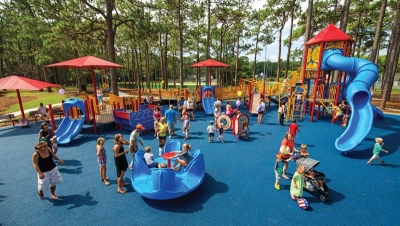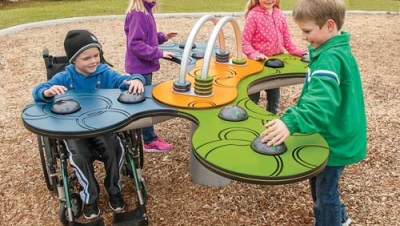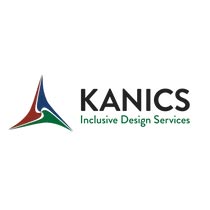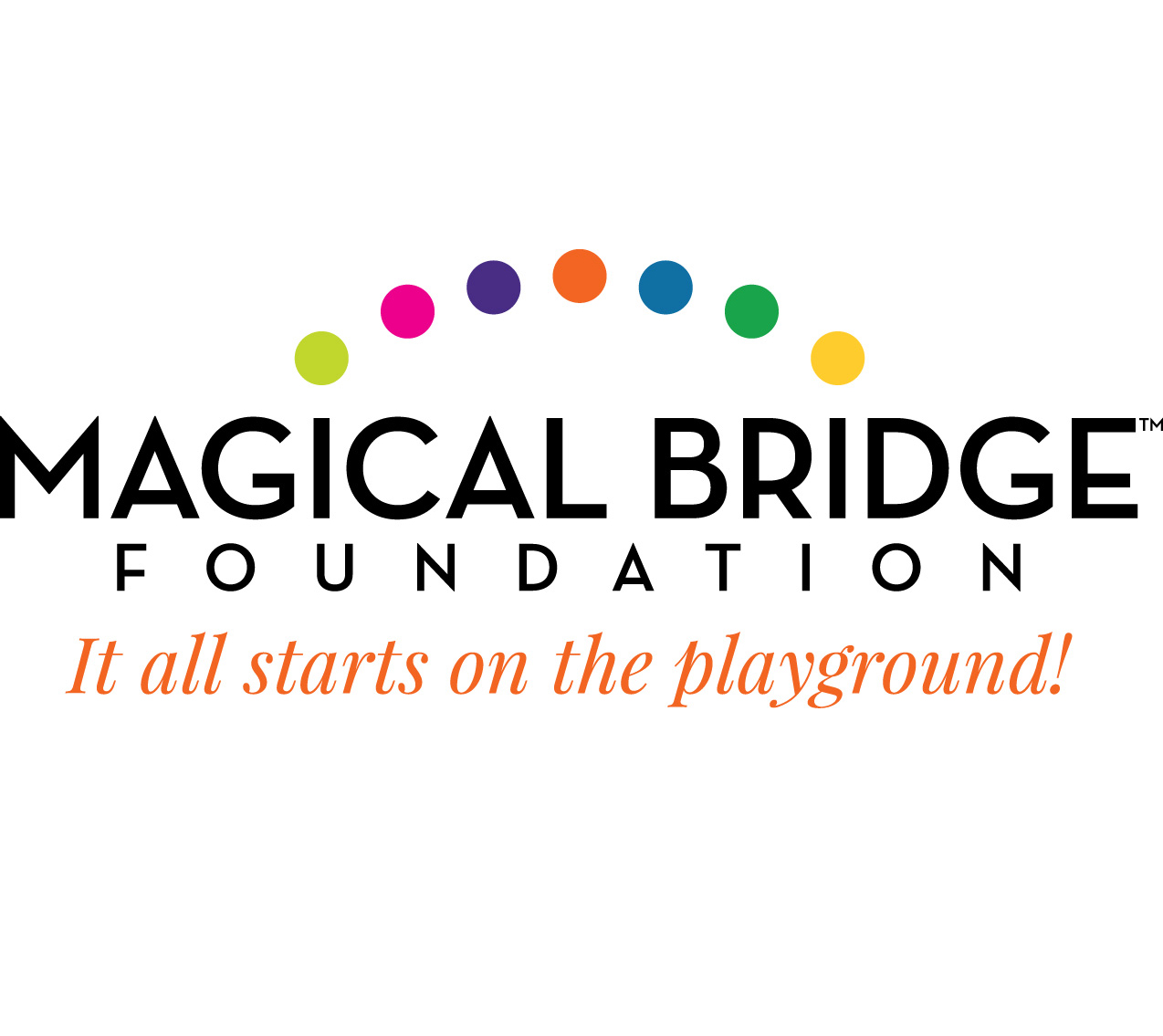Pull Up from Sutcliffe Play
Recently, someone asked me to recommend some playground equipment. They wanted to know which pieces are my favorites. Making my list was an interesting exercise. My favorite pieces say a lot about my philosophy of inclusive playground design.
There is no climbing or sliding on my list. Nothing that requires a ramp. All of the pieces are ground based. This is not to say that I don’t believe that climbing and sliding belong on the playground; I just haven’t seen anything truly original to support people with mobility challenges. The closest thing is the Triumph Climber by Playworld Systems and the Pull Up from Sutcliffe Play. These two climbers challenge people who don’t have use of their legs to climb using ropes and hand holds.
 I do have a problem with ramps. I think that they take up a lot of the space and the budget without adding an equivalent amount of play value. But this is an issue for another article.
I do have a problem with ramps. I think that they take up a lot of the space and the budget without adding an equivalent amount of play value. But this is an issue for another article.
Eight of the ten products on my list are ones where children may play in groups. There is nothing more inclusive, in my mind, than when children of different ages and abilities are all playing on the same equipment. They may play differently, but they are all together. In many cases, younger children learn from new ways to play from older children.
All of my choices provide a sensory experience for children. Some have tactile or auditory experiences, but most of them offer vestibular motion and proprioceptive experience—spinning, rocking, jumping. Children with different disabilities need these experiences and often do not have the opportunity to participate in them. As well, all children love these experiences. There are always lines to use these pieces—demonstrating that ALL children truly are playing together.
Half of my favorites are not manufactured in the US. In fact, except for a few exceptions, these pieces do not meet safety standards in the US. It is such a shame; I just don’t see why these are any more dangerous than what we currently have in our playgrounds. When you ask a child to draw their dream playground, you almost always get a trampoline and a zip line. Well, the people in the UK and Australia include both of these in public playgrounds. They have gone even further and made adaptions so people with mobility disabilities can participate.
 Another commonality of these products is that there are multiple ways to play on them. On the various swings, you could play alone or in a group. You can lay, sit or stand. It can swing in a calming motion or more energetically. This gives these pieces very high play value. You are not spending money so that only one group of kids may enjoy the resources; instead you are purchasing something that everyone will want to use. Many of these pieces even attract teenagers and adults.
Another commonality of these products is that there are multiple ways to play on them. On the various swings, you could play alone or in a group. You can lay, sit or stand. It can swing in a calming motion or more energetically. This gives these pieces very high play value. You are not spending money so that only one group of kids may enjoy the resources; instead you are purchasing something that everyone will want to use. Many of these pieces even attract teenagers and adults.

Fifty percent of these pieces were not designed with people with disabilities in mind. They designed a great piece of play equipment that they thought children would love. Then by observing children at play, they found that equipment attracted children with disabilities, too. A few times, they made some tweaks to better support the full range of children, but nothing that took away the play value for other children. For instance, with the NEOS 360,after watching children using wheelchairs play the game, they decided to slightly lower the buttons for better reach range. The result of this for typically developing children is that they have to bend and jump more—giving them an even further workout.

In other cases, pieces were developed with only one type of disability in mind, which resulted in a need of this particular type of play for a broader range of children. The Cozy Cocoon was designed for children with autism. It gives them a place to go when they get overwhelmed. After watching children play in playgrounds with Cozy Cocoons, we have found that lots of children like a chance for quiet play. They may squeeze two at time in the Cocoon and just spend time whispering to a friend.
 I like that many of these pieces enable children who have problems with body stability to play. My son cannot sit on his own. He needs the support of a good seat. If I brought him to a playground with these pieces, he could play on the Glider, Trampoline and Ability Space Whirl without ever leaving his wheelchair. It is so rare that a person who uses a wheelchair will get a vestibular motion experience unless they are transferred from the chair. These products give children this experience. When Samuel was younger, we could easily transfer him out of his chair. He would have loved to lay down on a Bird Nest Swingwith his sister and swing. He would have also loved the Wee Saw, with its deep supportive seats.
I like that many of these pieces enable children who have problems with body stability to play. My son cannot sit on his own. He needs the support of a good seat. If I brought him to a playground with these pieces, he could play on the Glider, Trampoline and Ability Space Whirl without ever leaving his wheelchair. It is so rare that a person who uses a wheelchair will get a vestibular motion experience unless they are transferred from the chair. These products give children this experience. When Samuel was younger, we could easily transfer him out of his chair. He would have loved to lay down on a Bird Nest Swingwith his sister and swing. He would have also loved the Wee Saw, with its deep supportive seats.
I encourage playground equipment designers to keep pushing the envelope to create wonderful experiences for all children. And I encourage all of us who love good playgrounds to push to modify safety standards to enable children in the United States to play on these great pieces.
Here is my list (in no specific order). I would love to hear about playground pieces you would add to the list.
1. NEOS360 by Playworld Systems

2. Freenotes Musical Instruments

3. Ability Space Whirlby GL Jones

4. Bird Nest Swing by many companies

5. Super Rope-End Swingby Huck

6. Rolli Trampoline by Huck

7. Wheelchair accessible gliders by many companies

8. We Sawby Landscape Structures

9. X-Wave 2from Xccent Play

10. Cozy Cocoonfrom Playworld Systems

11. Accessible Zip Line from Play Works











Inclusive
I have installed the Xccent x- wave at several locations and it is extremely populate and fun. Kids at a school site line up to use it and then cooperatively rock each other. Love that!
Bankshot Playgrounds, playcourts and mainstream elements
Love these playcourts! They are great for EVERYBODY!
Bankshot Playgrounds, playcourts and mainstream elements
Regardless of whether one is impressed by these systems, I'd state as fact and reality that wherever a Bankshot playcourt, essentially a playground with a ball consisting of incremental challenge is, and has been, placed alongside these or other creeping, crawling elements you can guess where the kids with or without disabilities and their friends end up spending the day. That's because playcourts like Bankshot are not composed of been there and done that features interesting at best for 2 minutes of play and generally exclusive for certain populations. Rather, at Bankshot, challenge, growth, skill enhancement, participants playing alongside not against others, retains and builds interest and confidence, growth and skill, particularly for those children and adults too who have outgrown the traditional playground.
Neos 360
Playworld Systems is going to be exhibiting the NEOS 360 at the Chicago Toy & Game Fair , 11/23 & 24, 2013.